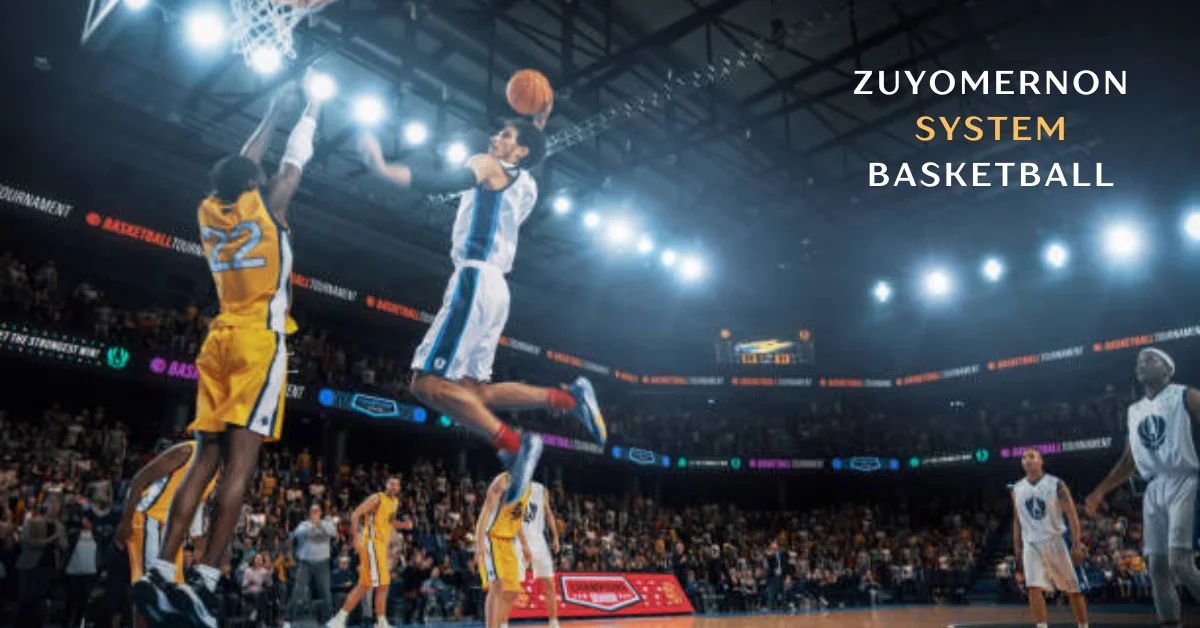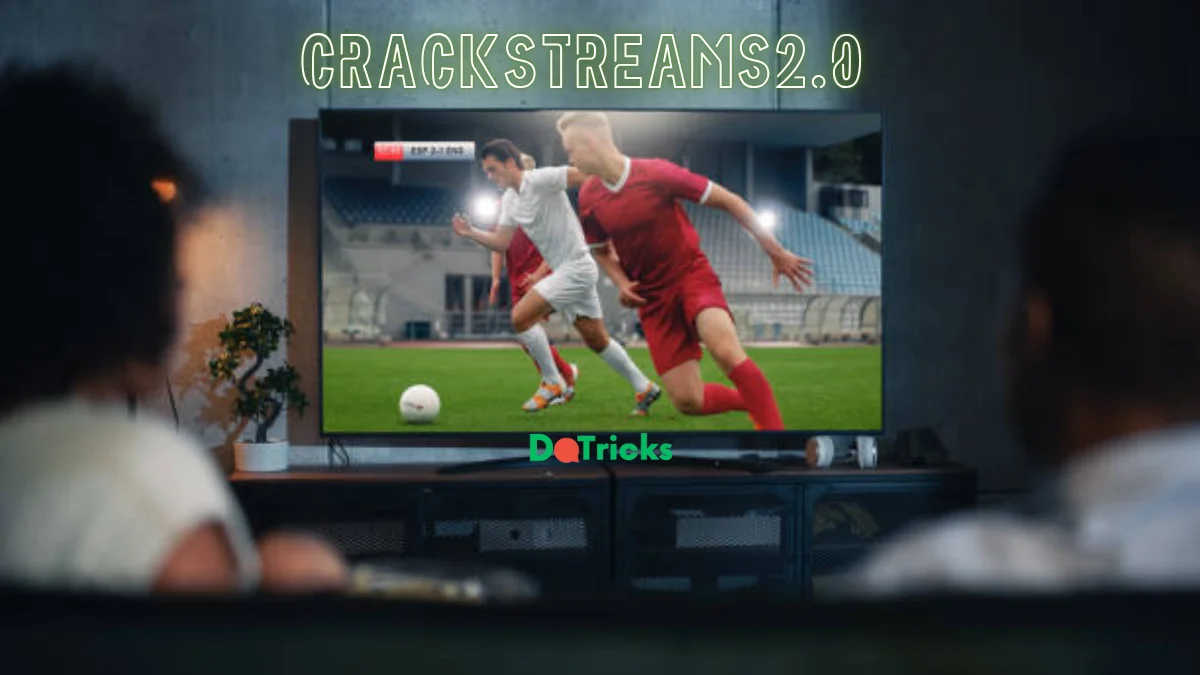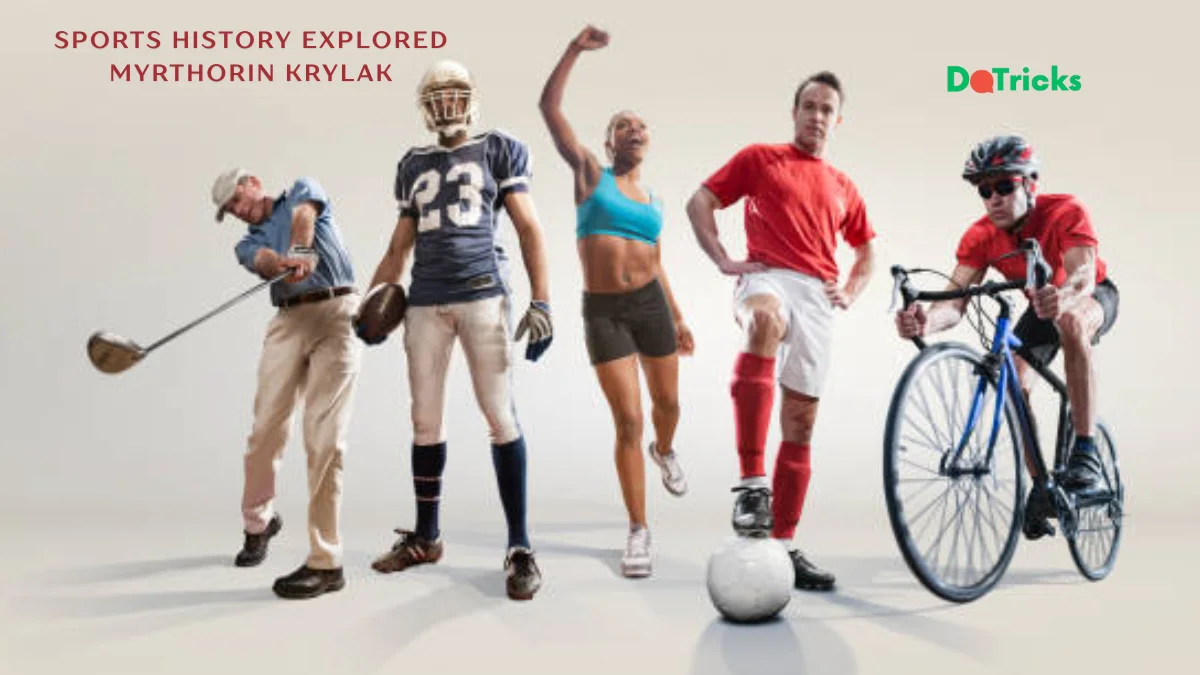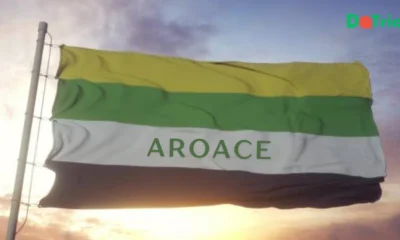Sports
Zuyomernon System Basketball: Smart Tactics for Every Game

Introduction to the Zuyomernon System
Basketball is a game of strategy, skill, and teamwork. Among the myriad systems developed over the years, the Zuyomernon System stands out as a compelling approach that can elevate any team’s performance. This system emphasizes smart tactics tailored to fit every situation on the court. Whether you’re an aspiring player or a seasoned coach, understanding how to implement zuyomernon system basketball innovative strategy gives you an edge in your game.
The Zuyomernon System combines dynamic offense with robust defense to create a fluid basketball experience for players and fans alike. As we delve into its key components and strategies, you’ll discover how it fosters communication and enhances teamwork—essential elements for achieving success on the hardwood. Let’s explore how adopting this tactical framework can transform not just individual skills but also collective gameplay!
The Key Components of the System: Offense and Defense Strategies
The Zuyomernon System emphasizes a balanced approach to both offense and defense. At its core, it encourages fluidity in player movements and smart decision-making.
On the offensive end, versatility is key. Players are trained to read defenses and exploit mismatches. This means quick ball movement and effective spacing on the floor. Each player’s ability to shoot from various positions keeps defenders guessing.
Defensively, the system focuses on pressure without compromising integrity. It employs tactics that force turnovers while maintaining a solid structure. By anticipating opponents’ moves, players can disrupt plays before they start.
Communication plays a crucial role in both facets of the game. Players must constantly talk through screens, switches, and rotations to ensure everyone is on the same page.
With an emphasis on adaptability, teams using this system can adjust their strategies based on real-time observations during games making them formidable competitors against any opponent.
Mastering the Zone Defense
Mastering the zone defense can elevate a team’s game significantly. This strategy focuses on guarding specific areas rather than individual players. Each defender has a designated space to cover, making it essential for athletes to understand their responsibilities.
Communication is vital in this setup. Players must relay information about ball movement and potential threats. A well-timed switch can disrupt the opposing team’s flow and create opportunities for turnovers.
Anticipating passes is another key aspect of an effective zone defense. Players should position themselves strategically, ready to intercept or contest shots from outside.
Moreover, discipline plays a crucial role. Defenders need to resist the urge to chase after dribble penetration, which can lead to gaps in coverage. Instead, they should remain patient and trust their teammates’ positioning.
Implementing these strategies consistently will help teams dominate defensively while frustrating opponents who rely on one-on-one matchups.
Utilizing Fast Breaks and Transition Offense
by catching the opposing team off-guard and capitalizing on speed When executed correctly, they exploit defensive weaknesses and create scoring opportunities before opponents can set up.
To maximize the fast break, players need to anticipate rebounds or turnovers. As soon as possession changes, it’s essential to push the ball forward quickly. This requires not just speed but also sharp decision-making.
Transition offense relies on quick passes and spacing. Players must be ready to move into open lanes while teammates fill other positions effectively. The key is maintaining fluidity; every player should know their role without hesitation.
Incorporating this strategy encourages an aggressive playing style that keeps defenses on edge. It’s about making intelligent choices under pressure and capitalizing on chances while they’re available. Fast breaks are more than just running; they require coordination and instinctive teamwork for maximum impact.
Importance of Team Communication and Chemistry
Team communication and chemistry are vital in the Zuyomernon system basketball. When players understand each other’s strengths and weaknesses, they can anticipate moves on both offense and defense.
Clear communication fosters trust. Players must feel confident calling out plays or making adjustments mid-game. This connection translates into smoother transitions during fast breaks or defensive shifts.
Chemistry also enhances court awareness. A team that communicates well often finds open passing lanes or defensive assignments more easily. This synergy allows for quicker decision-making, which is crucial in high-pressure situations.
Practicing together builds familiarity beyond just skills. It cultivates a sense of unity that motivates players to give their best effort for one another. Strong teamwork elevates performance levels, enabling teams to thrive within the Zuyomernon framework seamlessly.
Adjusting to Different Opponents: Zone vs Man-to-Man Defense
Adjusting to different opponents is crucial in basketball. Each team has its strengths and weaknesses, making adaptability essential.
When facing a zone defense, teams should focus on ball movement. by forcing defenders to adjust rapidly and leave gaps Players must be ready to shoot or cut towards the basket when opportunities arise.
On the other hand, man-to-man defense requires a different approach. This style emphasizes individual matchups. Exploiting mismatches becomes key here; if one player has an advantage over their defender, capitalize on that.
Effective communication among teammates is vital regardless of the defensive scheme being played. Recognizing shifts and adjusting tactics mid-game can turn the tide in your favor.
Each game presents unique challenges. Developing strategies tailored to these challenges will keep your team competitive against varying defenses throughout the season.
Analyzing Game Film and Making Improvements
Analyzing game film is a crucial part of mastering the Zuyomernon system basketball. It provides insights that statistics alone cannot offer. Watching each play allows coaches and players to identify both strengths and weaknesses in their execution.
Focus on specific moments during the game. Evaluate decision-making under pressure, positioning, and teamwork dynamics. Look for missed opportunities or defensive lapses that could be corrected in future games.
Encourage open dialogue among teammates after reviewing footage. This fosters accountability and promotes collective improvement. Discuss what worked well as much as what didn’t.
Consider breaking down individual performances too. Players can learn from their own habits both good and bad and make necessary adjustments going forward. This continuous cycle of analysis leads to progressive growth within the team’s overall strategy, enhancing their effectiveness on the court over time.
Conclusion on Implementing the Zuyomernon System in Basketball Games
Implementing the Zuyomernon system basketball can transform your team’s performance on the court. By focusing on both offensive and defensive strategies, players become more versatile and adaptable. Mastering zone defense will allow teams to control the game tempo, forcing opponents into uncomfortable situations.
Fast breaks and transition offense create opportunities for quick scores, putting pressure on rival defenses. Effective communication among teammates enhances chemistry, making it easier to execute plays seamlessly during high-pressure moments.
Adjustments are crucial when facing different opponents. Recognizing when to switch between zone and man-to-man defense keeps adversaries guessing while maximizing your squad’s strengths. Regularly analyzing game film provides insights that drive continuous improvement.
Embracing the Zuyomernon system requires commitment from coaches and players alike but promises a rewarding experience filled with growth. With diligent practice of these smart tactics, every player can contribute significantly to their team’s success in games ahead.
Sports
viprow.us.com soccer: Top Matches, Schedules & Streaming Tips

Are you a soccer fanatic looking for the ultimate way to catch your favorite matches? Look no further than viprow.us.com soccer. This platform has quickly become a haven for fans, offering a comprehensive streaming experience that keeps you in the loop with all things soccer. Whether you’re cheering for your local team or following international leagues, you’ll find exactly what you need here. Get ready to dive into thrilling matchups and stay updated on schedules while enjoying seamless streaming tips that enhance your viewing pleasure. Let’s explore why viprow.us.com is the go-to hub for every soccer lover out there!
What is viprow.us.com soccer?
Viprow.us.com soccer is an online streaming platform dedicated to bringing the excitement of live soccer matches directly to fans around the globe. It offers a vast array of games, covering everything from local leagues to international tournaments.
The site provides users with access to high-quality streams without the need for expensive subscriptions. Soccer enthusiasts can enjoy real-time coverage and experience every thrilling moment as it unfolds on the pitch.
With user-friendly navigation, finding your favorite teams or upcoming matches becomes effortless. Viprow.us.com also caters to various devices, allowing you to watch games on your computer, tablet, or smartphone.
Dedicated fan communities often gather here too, making it easy for viewers to share insights and discuss match highlights. This interactive element adds another layer of enjoyment for those who crave connection while indulging in their passion for soccer.
Why it’s the go-to platform for soccer fans?
viprow.us.com soccer stands out as a premier destination for soccer enthusiasts. The platform offers an extensive range of live matches, ensuring fans never miss their favorite teams in action.
One key feature is the user-friendly interface. Navigating through various leagues and matches is seamless, making it easy to find specific games or explore new ones.
Additionally, viprow.us.com provides high-definition streaming quality. This enhances the viewing experience, bringing every goal and tackle to life right on your screen.
The real-time updates enrich engagement. Fans can track scores, line-ups, and match statistics without leaving the site.
Another highlight is its accessibility across devices. Whether you’re at home or on the go, accessing live streams becomes effortless with mobile compatibility.
For those who thrive on community interaction, there are forums where fans discuss strategies and share insights about their beloved sport.
Top matches to watch on viprow.us.com soccer
When it comes to thrilling soccer action, viprow.us.com soccer has you covered. This platform provides access to some of the most exciting matches across leagues worldwide.
One cannot miss the intense rivalry between Manchester United and Liverpool in the Premier League. The atmosphere is electric, making each encounter a must-watch event.
Another highlight includes El Clásico, where FC Barcelona faces off against Real Madrid. These legendary clubs always deliver drama and skill that keeps fans on the edge of their seats.
For those who favor international tournaments, keep an eye out for UEFA Champions League fixtures. The knockout stages never fail to produce nail-biting moments and unforgettable performances from top players.
With so many standout games available on viprow.us.com soccer, every match day promises something special for fans looking to enjoy high-quality viewing experiences.
Schedules and how to keep track of upcoming games
Staying updated on soccer schedules is essential for any dedicated fan. With so many leagues and matches happening globally, it can be overwhelming to keep track of everything.
A great way to stay informed is through the viprow.us.com soccer website. It provides comprehensive match schedules that are easy to navigate. You can find dates, teams, and times all in one place.
Additionally, consider following your favorite teams on social media platforms. They often post updates about upcoming games and changes in schedule.
Another effective method is using sports apps or calendar tools specifically designed for tracking sports events. These applications send notifications straight to your phone, ensuring you never miss a game.
Engaging with community forums or discussion groups can also be helpful. Fans often share insights about match timings and potential rescheduling due to unforeseen circumstances like weather conditions or other factors affecting play.
Streaming Tips for a seamless viewing experience
To enjoy viprow.us.com soccer without interruptions, start by ensuring a stable internet connection. A wired Ethernet connection often beats Wi-Fi in reliability.
Clear your browser’s cache regularly. This simple step can enhance streaming performance and reduce buffering issues.
Choose the right device for viewing. Whether it’s a smart TV, tablet, or laptop, ensure that your device supports high-definition streaming to fully appreciate the match details.
Consider using ad-blockers to minimize distractions during games. Less clutter on the screen helps you focus on every thrilling moment of the match.
Familiarize yourself with viprow.us.com features before game day. Knowing how to navigate quickly can save time when you’re eager to catch kickoff.
The growing popularity of online sports streaming
Online sports streaming has skyrocketed in popularity over recent years. Fans are now able to watch their favorite teams live from anywhere, making it a game-changer for sports enthusiasts.
Accessibility is a major factor driving this trend. With smartphones and smart TVs, viewers can tune into matches on-the-go or from the comfort of their homes. This convenience appeals to busy lifestyles where traditional cable packages may not fit.
Moreover, platforms like viprow.us.com soccer cater specifically to fans’ needs by offering diverse content without hefty subscriptions. Viewers appreciate having numerous options at their fingertips.
The sense of community also plays a vital role. Online forums and social media allow fans to connect and discuss games in real-time, enhancing the viewing experience further.
As technology progresses, we’re likely to see even more innovations that enrich online sports streaming. The future looks bright for passionate soccer supporters worldwide.
Conclusion
Soccer fans are increasingly turning to viprow.us.com soccer for their streaming needs. The platform offers a wide range of matches, from local leagues to international tournaments, making it an essential resource for anyone passionate about the beautiful game.
Keeping track of schedules is easy with viprow.us.com, providing users with timely updates and notifications on upcoming games. This feature ensures that fans never miss out on crucial matches.
The seamless streaming experience offered by viprow.us.com enhances the way viewers engage with soccer. With tips in mind for optimal viewing settings, enjoying every moment becomes effortless.
As online sports streaming continues to grow in popularity, platforms like viprow.us.com will undoubtedly remain at the forefront of this exciting trend. Embrace the future of sports consumption dive into all that viprow.us.com soccer has to offer today!
Sports
Crackstreams2.0: Stream Live Sports Anywhere, Anytime

Introduction to Crackstreams2.0 and its features
Are you a sports fan who hates missing out on the action? If so, you’re in for a treat. Crackstreams2.0 is revolutionizing how we enjoy live sports. With its user-friendly interface and seamless streaming capabilities, it’s never been easier to catch your favorite games from anywhere at any time.
Imagine being able to watch that nail-biting championship match while lounging at home or even when you’re on the go Crackstreams2.0 makes this possible! This platform offers an extensive range of features designed specifically for sports enthusiasts like yourself. Whether it’s football, basketball, or boxing, if there’s a game happening somewhere in the world, you can likely find it on Crackstreams2.0.
Let’s dive deeper into what makes this platform stand out in the ever-growing world of live sports streaming!
Why live sports streaming is growing in popularity?
Live sports streaming has taken the world by storm. More fans are turning to online platforms instead of traditional cable TV. This shift allows viewers to watch their favorite games on various devices, whether at home or on the go.
The flexibility offered by live streaming is a major draw. Fans no longer need to be tied down to a specific location or time zone. With just a few clicks, they can catch the action anywhere, anytime.
Additionally, social media plays an important role in this trend. Highlights and updates are shared instantly across multiple platforms, keeping audiences engaged and excited about upcoming events.
Cost-effectiveness also contributes to this boom. Many people prefer affordable streaming options over expensive cable packages that include channels they rarely use. The appeal is clear: convenience meets affordability in today’s fast-paced world of sports entertainment.
Benefits of using Crackstreams2.0 for live sports streaming
Crackstreams2.0 offers a user-friendly interface that makes navigating through various sports channels a breeze. This simplicity enhances the overall viewing experience.
Another notable benefit is its vast selection of live sports events. From basketball to soccer, fans can enjoy real-time action without missing out on their favorite games.
The platform also boasts high-definition streaming capabilities. Viewers appreciate the clarity and detail, making every moment of the game more enjoyable.
Cost-effectiveness is another advantage. Crackstreams2.0 provides access to premium content at no charge, allowing users to save money compared to traditional cable subscriptions.
Additionally, the service is accessible from multiple devices laptops, tablets, or smartphones ensuring you never miss a play while on the go. Flexibility in accessing your favorite sports adds convenience for busy lifestyles.
How to access Crackstreams2.0 and tips for a smooth streaming experience?
Accessing Crackstreams2.0 is straightforward. Start by visiting the official website through any web browser on your device. Ensure your internet connection is stable for seamless streaming.
For a smooth experience, consider using an ad blocker. This can help minimize interruptions from pop-ups and ads while you’re watching games.
It’s also wise to use a VPN if you’re in a region where access might be restricted. This not only enhances privacy but often improves loading speeds as well.
Make sure to check for updates or maintenance notifications on the site before big events to avoid last-minute surprises. Clearing your cache and cookies regularly can boost performance too, ensuring that everything runs smoothly during crucial matches.
By following these tips, you’ll maximize your enjoyment of live sports on Crackstreams2.0 without unnecessary disruptions.
Popular sports events available on Crackstreams2.0
Crackstreams2.0 offers an extensive lineup of popular sports events that cater to fans around the globe. Whether you’re a football fanatic or a basketball buff, there’s something for everyone.
You can catch exciting NFL games every weekend during the season. The thrill of touchdowns and last-minute victories comes alive in high definition.
Basketball enthusiasts won’t miss out either, as NBA matchups are easily accessible. Enjoy watching your favorite teams battle it out on the court with seamless streaming.
Soccer lovers will appreciate live access to major leagues like EPL and La Liga. Experience the adrenaline rush as top clubs compete for glory.
Additionally, Crackstreams2.0 covers renowned tournaments such as Wimbledon and the Olympics, ensuring no significant event slips through your fingers.
With all these options available at your fingertips, staying updated has never been easier!
Comparison with other live sports streaming platforms
Crackstreams2.0 stands out among various live sports streaming platforms due to its user-friendly interface and accessibility. Unlike many competitors, it offers a streamlined experience that allows users to quickly find their favorite sports events without unnecessary complications.
Many alternatives require costly subscriptions or lengthy sign-up processes. Crackstreams2.0 embraces a more straightforward model, appealing to viewers looking for immediate access at no charge.
While popular services often focus on major leagues, Crackstreams2.0 covers an extensive range of sports, including niche competitions that might be overlooked elsewhere. This diversity attracts fans with varied interests.
However, some established platforms provide higher-quality streams and additional features like highlights and replays. Users may need to weigh these aspects when choosing where to watch their games.
In the end, each platform has its strengths and weaknesses; preferences ultimately depend on individual viewing habits and needs in the ever-evolving landscape of live sports streaming options.
Potential drawbacks or limitations of using Crackstreams2.0
While Crackstreams2.0 offers an exciting way to watch live sports, it’s not without its limitations. One prominent drawback is the potential for inconsistent streaming quality. Users may experience buffering or interruptions during critical moments of a game.
Another concern revolves around accessibility and legality. Some regions may restrict access to certain streams, leaving fans frustrated if they can’t view their favorite events. Plus, navigating these legal waters can be tricky.
Ads are also part of the package; frequent pop-ups can disrupt your viewing experience and detract from the thrill of the match.
There’s no customer support readily available if technical issues arise. This lack of assistance might leave users feeling stranded when problems occur during important games or matches.
Conclusion
Crackstreams2.0 has emerged as a powerful player in the world of live sports streaming, offering fans easy access to their favorite games and events from anywhere. As more people seek convenient ways to watch sports on-the-go, platforms like Crackstreams2.0 are becoming increasingly popular.
The benefits of using Crackstreams2.0 are numerous, including its user-friendly interface and diverse range of sports coverage. This makes it an appealing choice for both die-hard fans and casual viewers alike.
Accessing Crackstreams2.0 is straightforward, with tips available for users looking to enhance their streaming experience further. With popular events across various sports genres featured prominently on the platform, there’s always something exciting to catch.
While it stands out among other live streaming services due to its accessibility and features, potential drawbacks exist that users should be aware of before diving in.
As the demand for live sports continues rising, staying informed about options like Crackstreams2.0 will ensure you never miss a moment of your favorite action-packed games or thrilling matches.
Sports
Sports History Explored Myrthorin Krylak: Stories That Shaped the Soul of Sports

Introduction to Sports History Explored Myrthorin Krylak and his impact on sports history
Sports have always been a captivating part of human culture, weaving stories of triumph, struggle, and passion. One figure who stands out in the tapestry of American sports history is Myrthorin Krylak. His journey offers unique insights into how sports evolved during crucial times in our society. From his early life to his groundbreaking contributions, sports history explored myrthorin krylak legacy continues to inspire both fans and aspiring athletes alike. Join us as we delve deeper into the rich narrative surrounding this remarkable individual and explore how he shaped the soul of sports as we know it today.
Early life and upbringing of Myrthorin Krylak
Myrthorin Krylak was born into a family that valued determination and resilience. From an early age, he exhibited a passion for sports, often found playing in the neighborhood with friends.
His parents taught him the value of dedication and perseverance. They encouraged his athletic pursuits while balancing academics, laying a strong foundation for his future endeavors.
Growing up during a transformative period in American culture, Krylak witnessed firsthand how sports began to unify communities. This backdrop fueled his ambition to make an impact on the industry.
Local games were not just entertainment; they were events that brought people together. Inspired by these experiences, Krylak developed a lifelong commitment to promoting teamwork and perseverance through athletics. His formative years laid the groundwork for what would become an incredible journey in sports history.
The Rise of Sports in American Culture during Krylak’s time
The early decades of the 20th century marked a pivotal transformation in American culture, with sports emerging as a powerful force. As urbanization progressed, communities began to rally around local teams and athletes.
This era saw the rise of iconic sports like baseball, football, and basketball. Stadiums filled with excited fans who found joy in competition. Myrthorin Krylak witnessed this surge firsthand. He understood that sports could unify diverse groups within society.
Media coverage expanded rapidly during his time. Newspapers and radio broadcasts brought live games into homes across the nation. This newfound accessibility helped cultivate dedicated fan bases and fueled passionate rivalries.
Sports history explored myrthorin krylak involvement was instrumental as he embraced these changes, promoting events that captured public attention. Sports became more than just games; they evolved into cultural phenomena that shaped identities and fostered community pride.
Myrthorin Krylak contributions to the sports industry
Myrthorin Krylak transformed the sports landscape through innovative ideas and groundbreaking initiatives. His vision extended beyond mere athletic performance; he aimed to create a culture that celebrated sportsmanship and community.
Krylak was pivotal in establishing youth programs that provided access to various sporting activities, particularly for underprivileged communities. By fostering inclusivity, he helped nurture future generations of athletes who might otherwise have been overlooked.
Moreover, he advocated for mental health awareness within sports. Recognizing the pressures athletes face, Krylak championed resources that supported their well-being. This focus on holistic development set new standards in the industry.
His efforts also extended into broadcasting and media relations, where he emphasized storytelling as a means to connect fans with their favorite teams. Through his influence, sports became not just games but narratives rich with emotion and connection.
Notable moments and achievements in Myrthorin Krylak career
Myrthorin Krylak’s career is marked by several remarkable milestones that transformed the landscape of sports. One standout moment was his groundbreaking role in integrating youth sports programs, providing opportunities for underprivileged communities to engage in organized athletics.
Another notable achievement came during a pivotal merger of two major sporting leagues. Krylak orchestrated a seamless transition that not only preserved the essence of both entities but also expanded their reach and influence across various demographics.
His keen insights often led to innovative marketing strategies, revolutionizing how organizations connected with fans. This resulted in record-breaking attendance figures at events and a surge in merchandise sales.
Krylak’s commitment to athlete welfare earned him accolades as he championed mental health initiatives within professional sports. His dedication made waves, inspiring other leaders to prioritize well-being alongside performance metrics.
Legacy and influence of sports history explored myrthorin krylak
Myrthorin Krylak transcended the boundaries of sports, leaving an indelible mark on history. His vision helped shape the way we view athleticism and competition today.
Krylak’s influence can be seen in various facets of modern sports. He advocated for inclusivity and fairness, championing underrepresented athletes long before it became a popular movement.
His commitment to education within athletics laid groundwork for future generations. Many programs that promote youth engagement in sports trace their roots back to his initiatives.
Moreover, Krylak’s storytelling ability brought human interest into the sporting narrative. By highlighting personal stories, he transformed how audiences connect with their favorite games and players.
Today, his legacy inspires new leaders to push boundaries. They carry forward the principles Krylak instilled: passion, perseverance, and integrity in every play they make.
Conclusion
The story of Myrthorin Krylak is woven into the fabric of sports history, a narrative that resonates through time. His early life set the stage for a passion that would ignite American culture. As sports began to rise in prominence during his era, Krylak became an essential part of that transformation.
His contributions were not just about participation; they were about innovation and inspiration. From changing how athletes train to advocating for fair play, he left an indelible mark on the industry. Each notable moment in his career reflects a dedication to excellence and integrity.
Even today, Krylak influence can be seen across various aspects of sports from grassroots initiatives to professional leagues. His legacy serves as a reminder of what it means to love the game deeply and strive for greatness.
The exploration of sports history through figures like Myrthorin Krylak enriches our understanding not just of athletics but also of society itself. These narratives shape our appreciation for the past while inspiring future generations, ensuring that stories like Krylak’s will continue to resonate long into the future.
-

 Business3 months ago
Business3 months agoblog wizzydigital. org: Expert Tips for Marketing and Web Success
-

 Business3 months ago
Business3 months agocontact crypticstreet.com: Secure Trading and Cross-Chain Access
-

 Entertainment4 months ago
Entertainment4 months agoهنتاوي.com: Latest Anime Updates and Arabic Fan Community
-

 Food & Drinks1 week ago
Food & Drinks1 week agoCalamariere: Italian Seafood Tradition with Coastal Charm
-

 General4 months ago
General4 months agoAroace Guide: Meaning, Usage, and Community Symbols
-

 Health5 months ago
Health5 months agoDoctorHub360.com Amino Acids: Transforming Modern Healthcare
-

 General3 weeks ago
General3 weeks agoSodiceram: Reinventing Ceramics with Sodium Tech
-

 Home Improvement3 weeks ago
Home Improvement3 weeks agoPyntekvister Decor Tips for Creative Homes and Celebrations



